Order between March 29 and May 3, 2019


Order between March 29 and May 3, 2019

1. Select Your Wines
Let yourself be inspired by our detailed descriptions to find out which wines best suit your palate. Our custom chart also features a variety of symbols (explained below) that can guide your selection.
Grape variety Red White Rosé Sparkling
Bottle size
Number of bottles in case
Aroma
Taste
Serving temperature
Ideal with Evolution Drink this year
Will develop, drink within 2 years
Meant for cellaring
Concentration
Light Medium Great Oak Light
Medium
Heavy
Limited quantities
Limited
Very limited
Extremely limited
Less than 100 cases available
Members’ Choice
Most ordered by Opimian members
Opimian Suggests Starting a cellar
Medal Winner
Discovery
Opimian Discovery 2018 C257
Select Plus
Opimian Select Plus 2018 C257
M—Degree of Maturity (1-10)
M1 = lay down
M10 = fully mature
d—Degree of Drinkability (1-10)
D1 = needs time
D10 = ready to drink
Still unsure what to order? Opimian’s Member Service team is always available to help you make an informed choice. Call us at 1-800-361-9421 or e-mail MemberService@Opimian.ca.
2. place Your order
There are five ways to order
• Online: Go to Opimian.ca, sign in and select Order Now
• Email MemberService@Opimian.ca with your selection.
• Call 1-800-361-9421
• Fax your order to 514-481-9699
• Mail your order*
3. let us Handle the rest
The wines featured on this Cellar Offering are still at the producers’ wineries when you order them so it is normal that the process takes a bit of time and effort on our side.
Release dates are dependent upon actual arrival dates, distance from port of entry to liquor board and processing time required by each liquor board. For this cellar offering, the expected release date is mid-September 2019
Once the wine arrives at your local liquor store or distribution centre, you will receive a Pick Up Notice with the specified date (the Release Date) and your pick up location. You can follow the status of your shipment at all times at Opimian.ca.
conditions of purchase
• Accepted payment methods: Credit Card (Visa, MasterCard, American Express) or cheque payable to Opimian.
• Prices include all applicable federal and provincial mark ups and taxes.
• A valid membership card is required to order and pick up.
• Bottle prices are for reference only. All orders are by the case, with no minimum required.
• Last day to order from this Cellar Offering: May 3, 2019 Important: no orders will be processed after this deadline.
* Deadline for mailing orders: April 23, 2019. Please allow 10 days for delivery by Canada Post.
notes (as required by the SaQ’s operating procedures)
• A member ordering from this Cellar Offering requests that Opimian acts as the member’s agent in ordering the wines from the Société des Alcools du Québec (SAQ) and requests that Opimian remits the funds enclosed (minus any administration fees) to the SAQ to pay for the wines ordered.
• The prices as shown are the estimated costs to be charged by the SAQ plus an administration fee and consolidation charges.
Sweetness scaleGrams/litreExamples
[00] 0 - 3Chardonnay, Sauvignon Blanc, many reds
[01] 4 - 6Some New World varietals, some reds
[02] 7 - 12Champagne, Sparkling, Rosés, few reds
[03] 13 - 20Mosel, some Alsace, Anjou
[04] 21 - 34Semi-sweet Bordeaux, some sherry
[05] 35 - 50Kabinett German, Late Harvest, Alsace
[06] 51 - 74Spätlese German, Sweet Loire, Port, Dessert Muscat
[07] 75 - 100Auslese, Beerenauslese
[08]101 - 139Icewines, Sauternes, Barsac, dessert wines, Port
[09]140 - 179Icewines, Sauternes, Barsac, dessert wines, Port
[10] 180 >Speciality sweet wines, Trockenbeerenauslese
cover — At Spanish Palate’s Casa do Sol, the traditional pergola system of grape growing keeps the grapes well aired , far from the ground and healthy in this humid, challenging climate.

Spain currently has some of the most interesting restaurants in the world, at the same time Spanish wines are living a moment of creativity. Not only does Spain have the largest surface area planted to vines, it is probably the country that cultivates the largest acreage of vines aged 50 to over 100 years old. For years these were undervalued, and incentives in E.U. subsidies even led to some being uprooted. Fortunately, not all. Old vines are now highly sought after as an important factor in producing high quality wines — this is a recurring theme in the wines featured.
Spain’s neighbour Portugal is known for the large number of indigenous grape varieties planted, coming second only to Italy. Its older vineyards are often field blends with a mix of grapes planted in one plot. More recent plantings are mono varietal, the most renowned being Touriga Nacional. Portuguese varieties produce distinctive wines with personality and vibrancy. Iberian wines are complemented with white wines from southern Burgundy’s Mâconnais region. 2018 saw a good crop of grapes for the second year in a row, with no frost or hail. Both 2017 and 2018 vintage wines are showing well.
Opimian’s Wine Consultant Jane Masters MW, tastes, selects and writes the commentary for each of the wines in the cellar offerings. Celebrating her 21st year as a Master of Wine this year (one of 378 globally), Jane held the position of Chairman of the prestigious Institute of Masters of Wine 2016-2018. Having trained as a winemaker at the Institut d’Oenologie in Bordeaux after a degree in Biological Chemistry, Jane worked for UK retailer Marks & Spencer running the Wine & Drinks Category for many years. As an independent consultant Jane is constantly on the look out for exclusive wines from around the world for Opimian members. She regularly visits wine regions and meets producers and loves to share her passion and knowledge.


“We push ourselves to create unique wines, involving the local community in the process.”

Dutchman Louis Geirnaerdt arrived in Spain more than thirty years ago as a geologist and completed his PhD in the foothills of Somontano. Since then, Louis has worked for and with a number of wine producers, developed a passion for Garnacha, and built his own winery, Bodem, in Cariñena.

La Mirada a L Sur, B L a nco, do c a L atayud, Bodega Virgen de L a Sierra, 2018
La Mirada al Sur Blanco is produced from grapes grown on old Macabeo vines 50 to 100 years in age, planted in the mountains of Calatayud in northern Spain. Pale in colour, it has an intense aroma of fresh pears which jumps out of the glass. It is soft and easydrinking with more stone fruit flavours, apples and pears combined with some minerality on the finish.
1247
La Mirada a L Sur, t in to, do c a L atayud, Bodega Virgen de L a Sierra, 2018
1248
eS per anza organic Verdejo, d o ru eda, Bodega S aV e L i no Vega S, 2018
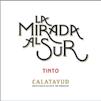
While a number of grape varieties are permitted within the Calatayud DO, red varieties dominate, representing approximately 83% of plantings, Garnacha Tinta being the most typical of the region. The ancient low bush vines are planted on south facing slopes. La Mirada al Sur Tinto is a mellow wine with red apple aromas. It is smooth with some depth and good youthful acidity, finishing with red cherry flavours.

Family-owned Bodegas
Avelino Vegas, in Santiuste de San Juan Bautista, is Axial’s partner in Rueda. Verdejo grapes for Esperanza were grown on 50-year-old vines on small plots around the village. Esperanza 2018 is a light to medium bodied white with intense lemon, lime and flinty aromas. Flavours of pears, passionfruit and green apple dance and linger on the palate. A short 24-hour skin contact preceded fermentation in tank, then the wine was matured on lees for two months.

1249 j a rdín de LúcuL o L o S B oheMio S, g a rnacha at L á ntica S, do n aVarra, L a c a S a de LúcuL o, 2018
Passionfruit, fresh apples, [01]
Manchego cheese served on a bed of grilled courgette and artichoke salad with toasted almonds and citrus dressing

This wine is dedicated to Lucius Licinius Lucullus, a great Roman military leader from the first century BC who became so famous for his banqueting that the word “Lucullan”, meaning lavish or luxurious, is derived from his name. Remains of ancient Roman wineries can still be seen in the Navarre region in northern Spain. Old bush vines are cultivated in the lower slopes of the Pyrénées Mountains. Grenache grapes were picked in October to produce a medium bodied, easydrinking wine with good balance and flavours of red cherries and red apples.

1250
o x te t h e Si L e nce, r e d
B L en d, dop c a riñena, Bode M B odega S, 2017
$ 23.67 $ 142.00
It was Dutchman Louis Geirnaerdt’s dream to build a winery, and after 30 years living and working with Spanish wines, that dream came to fruition. The winery is located in Cariñena, a region which Louis and his wife immediately felt connected to, and is named Bodem, meaning “soil” in Dutch. Their shared passion is for the Garnacha grape, which likely originated in what is now the Cariñena DO. Louis and co-owner Eugenie van Ekeris own seven hectares of vines and works with other local families on another 100 hectares. Oxte combines 25% Garnacha with 40% Tempranillo, 25% Syrah and 10% Cabernet Sauvignon. It has sweet succulent fruit characters with a supple palate and a silky texture, finishing with flavours of black cherries and a hint of coffee. Each grape variety was fermented separately and after malolactic fermentation, the wines were matured in French and American oak barrels for three months.

1251 j aV i er San p edro r á ndez, t e M p rani L L o, doc a r i oja, 2018, Bodega S Va L L o B er a
$ 24.67 $ 148.00

The 2018 Javier San Pedro Rández Tempranillo has intense plum and red berry aromas and is light to medium bodied. It has a fine smooth texture with a good acidity, providing balance and a flavoursome finish. The San Pedro family have a centuries-long heritage of vine growing around the medieval village of Laguardia in Rioja Alavesa. Javier joined his father’s bulk wine business at the age of 14 and always dreamed of producing elegant and concentrated wines under his own name. Produced from 100% Tempranillo, 80% of the grapes were wholebunch fermented in open tanks.
Fine texture, light to medium bodied
buttery roasted chicken with roasted vegetables
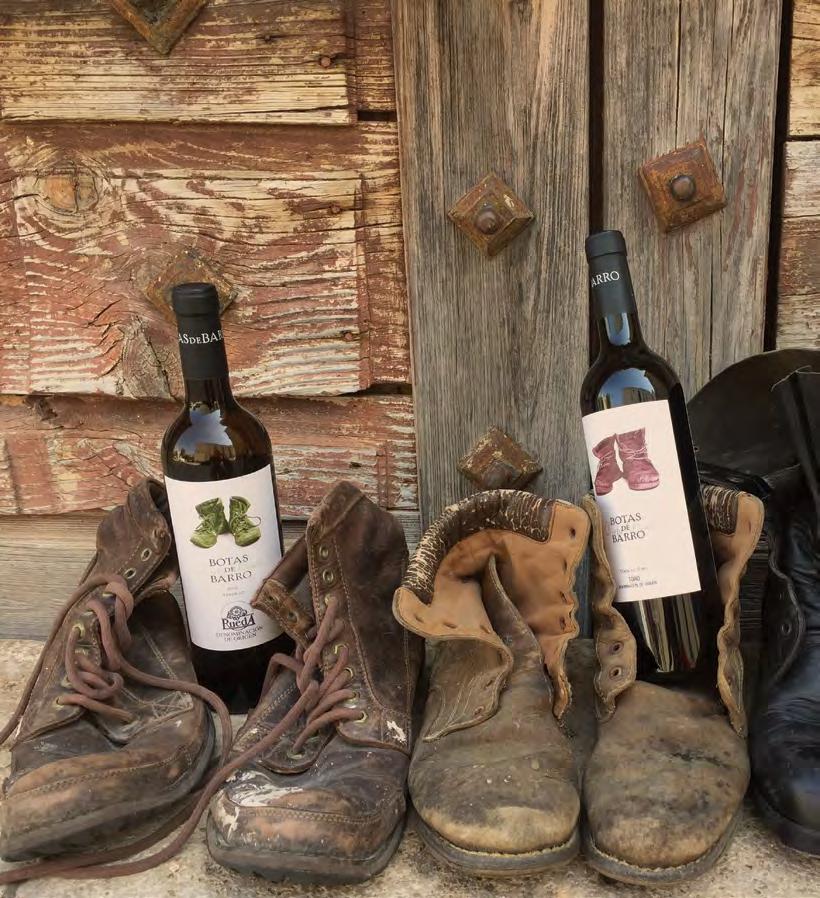

Toro, Zamora
Nicola Thornton and Alvaro Martin share a common confidence in Spain and its many hectares of ancient vines. Together, they set up Spanish Palate several years ago with wines produced from small, independently-owned wineries that have character and give a sense of place.
“Behind every wine there is a remarkable story of remarkable people and remarkable vineyards. There are still so many hidden gems in Spain—the world should discover them!”



Winemaker Josep Maria Suriol named his Cava after the previous vineyard owner. Leonor was born on the estate and lived there all her life. Her grandfather began making Cava for his family’s own consumption in the late 1800s and Leonor continued the tradition. She entrusted Josep with her legacy. In return, he promised that one day he would produce a special Cava named after her from grapes grown on the 35 hectares of vineyard. Pale in colour, Leonor de Carrera Brut is intensely fruity in aroma with apples and pears complemented by a soft, creamy palate. It is less mineral in style than the Clos Montblanc Cava, with more focus on fruit and a crisp finish.

The Mi Tractor Azul range of wines is made to express the fruit flavours inherent to each grape variety and the region in which it is grown. In this case, it is the Garnacha Tintorera grape from the Almansa region in south-eastern Spain. The region has always produced intensely coloured wines, which in the past were supplied to other wine regions and used as a blender to boost colour. Mi Tractor Azul Almansa 2017 is an intense purple colour. It has ripe dark fruits and spices on the nose with a more savoury character on the palate. It is medium to fullbodied with a lingering bitter cherry flavour. There was no use of oak.
I don’t recall ever having tasted a Spanish Malbec before. Quick research confirms that it is a rare occurrence, with a total of only 120 hectares planted in the country. Bodegas Hacienda Albae is one of only two producers to bottle a 100% Malbec wine. Alsón 2015 has intense aromas of forest fruits, herbs, raspberries and fresh grass. It is mellow and supple, with red fruit and damson jam flavours. The Carpintero family chose to plant Malbec in La Mancha due to its ability to retain acidity in hot climates and planted approximately 10 hectares to Malbec in 2012. The vines, located at 700 metres on gravelly, sandy and limestone soils are trellised and farmed organically. Grapes were harvested at night, fermented and then matured for six months with new French oak.


This wine is produced from grapes grown on old bush vines farmed organically with an average age of 45 years. Doña Juana is a blend of Garnacha, Monastrell and Syrah in equal measure. Each variety was harvested and fermented separately. The wines were then blended and matured in American oak barrels for eight months, giving the wine a pronounced spicy, pencil lead nose. It is rich and structured, medium to full-bodied with a grippy finish.

Deep purple in colour, ripe blackberry and blueberry aromas mingle with vanilla spice and smoky notes from four months’ aging with French oak. Cueva del Chamán is medium to fullbodied with savoury flavours and nutmeg and a fine grainy texture, finishing on woody notes with lingering bitter cherries.
Traditional French Cassoulet
oaky, red fruits
Spanish spice-rubbed pork tenderloin with garlic shrimp

1259
Bota S de Barro, oL d V ine t e M p rani LL o, do r i B e ra de L d u ero, 2017
Tempranillo
$ 25.33 $ 152.00

The Duero is one of the major rivers of the Iberian Peninsula, flowing 897 kilometres from northern central Spain, westwards across to Portugal where it is known as the Douro, out to the Ocean in Porto.
The Ribera del Duero
DO is located along the banks of the River Duero around the town of Aranda de Duero in the province of Burgos. The river plays a major factor in the region’s microclimate, characterized by large swings between day and night-time temperatures. Bright in colour, Botas de Barro 2017 Ribera del Duero has red fruits, violets and coffee aromas. It is relatively light in body with a firm acidity developing on the palate and finishes with ripe blueberry flavours. Grapes came from 100-year-old vines planted on sand and gravelly limestone soils.

1260
Bota S de Barro, t in ta de t o ro, d o t o ro, 2017
Tinta de Toro
$ 25.17 $ 151.00 1261
The Toro DO lies downstream from Ribera del Duero as the river continues its meandering path towards Portugal. Wine has been made in Toro since the end of the 1st century BC by the ancient Greeks. The town of Toro is also famous for founding Spain’s first university (which subsequently moved to Salamanca in the 13th century). The Toro DO has some of the world’s oldest vines at over a hundred years old, due mainly to the region’s very sandy soils which protected against Phylloxera. Botas de Barro Toro 2017 is intensely spicy with oak, incense and clove aromas leading to a supple palate. Oaky notes are laid over a dark succulent fruit background and sweet mid palate. Grapes were fermented and macerated on skins for seven days followed by five months maturation with American oak.

Bota S de Barro, oL d V ine g ar nacha, do aLM an S a, 2017
Garnacha Tintorera
$ 25.33 $ 152.00

A fruit salad of aromas with blueberries and mulberries precedes a soft and smooth palate brimming with plummy fruits, ripe blackberries, vanilla and spice. It has a grainy texture with bitter cherry and lingering flavours of raspberries and vanilla cream. Grapes were picked by hand and underwent a traditional fermentation at 30°C with 12 days of maceration on skins. It was matured for four months in French oak barrels with 15% new.
Plums, vanilla, blackberries
Creamy corn and chorizo-stuffed mushrooms


1262
in, i n S o L e nte g r aciano, doc a r i oja, Bodega S d. Mateo S S L., 2017
To taste a rare Spanish wine, order this Graciano today.
$ 27.67 $ 166.00
Graciano is one of five grape varieties permitted to produce red Rioja wines (although Tempranillo alone accounts for 75% of the region’s plantings). The variety is held in high esteem, even if it only represents a small proportion of vineyards and very few wineries produce a single varietal wine such as this. This is because Graciano is difficult to grow and produces very low yields. Insolente 2017 has meaty and herbal aromas with woodlands, musky spice and dark fruits behind. It is medium bodied with more dark fruits on the palate leading to a tart blackberry finish with some green notes. This is a wine with massive personality and depth. The 20-year-old vineyard is at Aldeanueva de Ebro in Rioja Baja.
herbal notes


8 Rosas Negras is a medium to full-bodied wine with grippy chewy tannins. It has ripe blackcurrant and earthy aromas with more savoury flavours on the palate, and bitter chocolate and black liquorice lingering on the tongue. Tinta de Toro grapes were grown on centenarian vines which are widely spaced and non-trellised. All the grapes were picked by hand between October 7 and 12, 2016 and underwent a cool maceration for four days prior to fermentation. It was matured for six months in 50% French and 5 0% American oak.


This white wine from Rias Baixas in Galicia in the north western corner of Spain is deliciously fresh with aromas of stone fruits, nectarines and honey. It is round and smooth with a firm crisp finish. The winery is located in the Ribeira do Ulla subzone on a historic estate built in the 15th century. Produced from 100% Albarino grapes, these were left to macerate for a short time on skins prior to pressing. Fermentation was carried out by natural yeasts and the wine aged on lees for ten months.
with firm acidity, [00]
lamb loin chops with fig spread and portobello mushrooms

1265

Loe S S B L a nco, do ru eda, 2018, Bodega S M igue L y ru ano
Verdejo
$ 28.33 $ 170.00
Tasted as a tank sample, the wine had not been filtered or fined yet. It has aromas of fresh apples and a soft creamy texture, as well as good mid palate fruit with melon, lemon and lime flavours. Loess Blanco is 100% Verdejo, produced from grapes from a selected plot of vines planted in Rueda in 1998. The four-hectare plot is located on a Quaternary terrace overlooking the Duero river with vines trained along a low vertical trellis and drip irrigated.
1266
Loe S S i n S p iration, t e M p rani LL o, do r i B e ra de L d u ero, 2017, Bodega S M igue L y ruano
$ 28.33 $ 170.00
A succulent wine, supple with lots of blueberry and blackberry flavours. It is slightly restrained in aroma but more than makes up for it on the palate which is mellow and smooth with a long bitter cherry and chocolate finish. It is produced from 100% Tempranillo with grapes harvested by hand in October 2017. It was matured for nine months in premium French oak barrels using a variety of toasts. Loess is named after the soil, a sedimentary soil laid down by wind action. The 27.6 hectares of Loess vineyards planted in 1998 are located in Roa on six distinct plots, each with its own characteristics and classified as “excellent” for vine growing by the University of Madrid.



Vinoselección works with wineries large and small in many regions across Spain. Here are some of my current top picks.
“We select outstanding wines that tell a story and come from traditional winegrowing regions, but also wines from many areas yet to be discovered.”

1268
1269
Tinta de Toro $ 25.17 $ 151.00
Winemaker Carlos Moro has 53 hectares of vines on the Valdefinjas farm, located 12 kilometres from the centre of the town of Toro. The farm also grows olives and has a pine forest. Soils are low in fertility with clay and calcareous components. Produced from 100% Tinta de Toro, the Cyan de Matarromera 2014 was matured for 16 months in oak with 60% American and 40% French barrels and has a distinctly woody character with nutmeg and cooked fruit aromas. It is supple with blueberries and blackberry flavours and a grippy finish.
2019-2022, M8 D9
Cooked fruits, nutmeg 18°C
blueberries, blackberries, toast
Garden tomato pasta with wine and basil

A succulent and smooth wine, it has blackberry and blackcurrant fruit flavours with a floral element. It was matured for twelve months in a combination of French and American oak casks with the oak completely integrated with the fruit, giving the wine a fine texture. A good vintage in Ribera del Duero, 2016 was witness to a mild winter followed by a cool and wet spring with summer arriving late. When it did finally arrive, it was hot and dry but tempered by the cool nights.
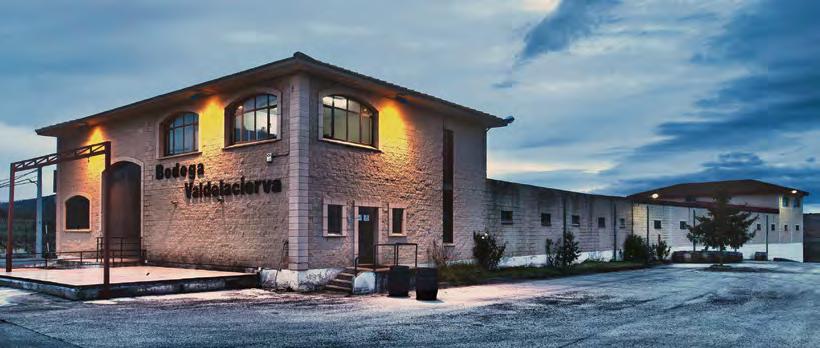
1270

$ 26.17 $ 157.00
Located in the old fortified village of San Vicente de la Sonsierra on the left bank of the Ebro River with splendid views across Rioja Alta, Bodegas Sonsierra groups together 240 vine growers with 430 hectares of vines in the foothills of the Sierra de Cantabria. 2015 was a very good quality vintage and the earliest harvest on record in Rioja. This Crianza has mellow aromas of cola with black cherries in the background. It is medium bodied with fresh red cherry fruit flavours. Grapes were harvested by hand, macerated for 24 hours then fermented. It was matured for twelve months in small oak barrels, although the oak is not obvious. It is smooth and elegant with a long sour cherry and cranberry finish.


1271
Viña e i zaga c r ianza, doc a r i oja, Vino S e i zaga, 2016
Tempranillo
$ 29.00 $ 174.00

Brothers Carlos and Javier farm their 40 hectares of family vineyards around Laguardia and Labastida in Rioja Alavesa. The winery, established in 2006, produces a small number of cases each year. Their Crianza 2016 has a dominant oak character with spicy coconut aromas laid over a red fruit and floral background. It is light on the palate with more red fruit and bitter liquorice flavours emerging, ending with a rustic chewy finish. Produced from 100% Tempranillo, it was matured in oak for 14 months.




Alfar Vendimia Seleccionada
2016 is an intense wine with good depth and elegance, requiring some cellaring before it reaches its optimum for drinking. On the nose, black fruits, vanilla, nutmeg and cloves give a warm and rich impression. On the palate, it is medium bodied with some grippy tannins, red berry fruits and sour cranberry flavours. Bodegas Valdelacierva lies in the heart of Rioja Alta at Navarette and has 200 hectares of vineyards in small plots between 25 and 130 years old. In this case, grapes were cultivated on 40-year-old bush vines cultivated around Briones and Baños de Ebro. After maceration for three days, wines were fermented then racked into new French oak barrels for malolactic fermentation and spent 12 months maturing in barrel.

Looking for an elegant wine? Any of these from Vinoselección will impress!
A medium to full-bodied wine, dense in colour with mellow fruit aromas, Braó 2016 combines aromas of fresh blueberries, vanilla and strawberry leaf. On the palate, flavours of sour cherries and blackberries show through and the wine has a powdery texture with a dry finish. Albert Jané is passionate about old vines, and for Braó he works with 60 to 8 0-year-old vines around Montsant cultivated at between 300 and 700 metres in altitude. The stony terroir is harsh and barren, and so the ancient twisted vines have had to toil to extract the nutrients and water required to survive – hence the name Braó, meaning courage and strength. Grapes were harvested by hand with a strict selection in the vineyard and picked into small 20-kilo cases. Grapes were macerated and fermented with punching down of the skins each day. It was matured for thirteen months in new and one-year old lightly toasted French oak barrels.
Sour cherry, blackberries


Montblanc, Barberà de la Conca, Catalonia
Bodegas Concavins is based in Barberà de la Conca in northern Catalonia, close to the fortified town of Montblanc. The area around Montblanc shows evidence of habitation in cave dwellings dating back to Palaeolithic times. Wine production was probably introduced to the region by ancient Romans but disappeared with the Moors. The family-owned winery is also close to Poblet Monastery, which was founded by Cistercian monks from France in 1151 and was hugely significant in the region. It is where many kings and queens from Aragon were buried over centuries.
“We support clean technologies and respect the environment, so 100% of the water we use is rainwater.”
1274

Mont BL anc 362, Brut c aVa r e S er Va, Mètode t ra diciona L , do c aVa
Macabeu, x arel-lo, Parellada
$ 25.33 $ 152.00
As sparkling wine sales around the world continue to be buoyant, Spain’s most famous bubbly, Cava, represents great value. The Penedès region has a history of sparkling wine production dating back to the 1870s, and uses the same method as in Champagne. Indeed, it was Catalan winemakers who invented the gyropalette – a mechanized way to gather fermentation lees in the neck of the bottle –which is now widely used in the French region. Montblanc 362 has aromas of sherbet, lime and fresh apples with a crisp fresh acidity. It was produced from a blend of 50% Macabeu, 30% Xarel-lo and 20% Parellada.




1275
Mont BL a nc 362 Maca B eu/ c ha rdonnay, do c ata L u nya, 2018
Macabeu, Chardonnay
$ 21.50 $ 129.00
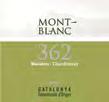
Tasted as a tank sample before fining and filtration, the 2018 has lots of appeal with aromas of fresh lime and lemon fruits. On the palate it displays more citrus character with a crisp green apple finish. It is a blend of Macabeu and Chardonnay which was fermented in stainless steel tanks to create a dry wine.
1276
Mont B L a nc 362 r o S at, do c ata L u nya, 2018
Pinot noir, Tempranillo, Trepat
$ 21.50 $ 129.00
Bright raspberry pink in colour, Montblanc 362 Rosat is made from a combination of Pinot Noir, Tempranillo and Trepat grapes. It has aromas of strawberries and raspberries and other red berry fruits leading to a soft round palate with an herbal edge. A wine with good depth and persistent cherry flavour.

1277
Tempranillo, Cabernet Sauvignon $ 21.33 $ 128.00

Predominantly Tempranillo with 15% Cabernet Sauvignon, this wine is deep in colour with aromas of dark and juicy fruits. It is medium bodied with a floral finish. Grapes came from vines approximately fifteen years old and were harvested in September for the Tempranillo, and mid-October for the Cabernet Sauvignon. It was aged in old oak barrels for a couple of months prior to bottling.
2019-2021, M8 D9
Dark fruits 18°C
Floral, juicy fruit
Sirloin skewers with sherry vinegar steak sauce and grilled scallions
1278
Merlot, Garnacha, Cabernet Sauvignon, Cariñena
$ 23.67 $ 142.00
This is a medium bodied, well-structured wine with some complex aromas of ripe cooked fruits, blackberry jam, vanilla and spices. It is smooth with nice mellow fruits mid palate and lingering flavours of succulent cherries and other juicy fruits. It is a blend of four grape varieties grown in four distinct vineyards. Grapes were fermented in stainless steel tanks followed by maturation for four months in old American and French oak barrels.
2019-2023, M8 D9
fruits, blackberry jam, vanilla 18°C
Albondigas in smoky red pepper and tomato sauce (Spanish meatballs)

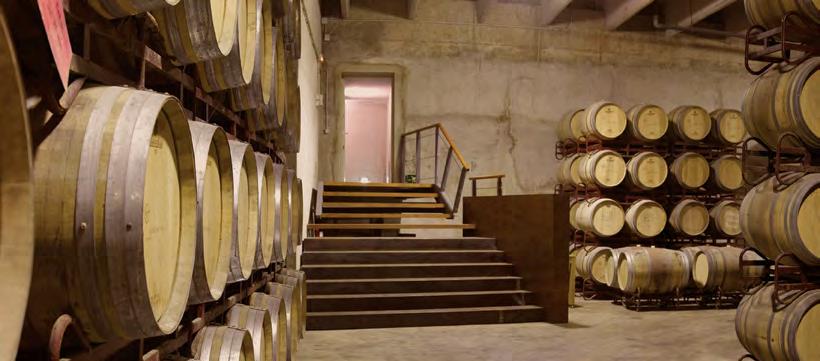

Syrah and samsó (aka Carignan) were cultivated on black slate and quartz soils known as Llicorella, producing a savoury wine. It is restrained on the nose with a firm palate with dark fruits, dried herbs and bitter treacle flavours. Tannins and acidity come together to produce a grippy finish which should mellow with some keeping. It spent 12 months in new and used oak barrels.
2019-2024, M8 D8
Savoury, some fruit 18°C
Dried herbs, dark fruits, treacle
Venison loin with beet and garlic purée, brussels sprouts, roasted beets and oyster mushrooms

Trepat is an indigenous variety to the Conca de Barberà region. It produces large compact bunches of thick-skinned grapes and is mainly used for rosé or light red wine production. In this instance, a much more ambitious wine has been produced, with good mid palate weight, cooked forest fruit characters and grippy tannins. It was produced from a single 1.5-hectare vineyard of 50-year-old vines and has aromas of sour blackberries and cola. Grapes were harvested by hand and the wine matured in French and American oak barrels.
2019-2022, M8 D9
vanilla, cooked forest fruits 18°C
blackberries, cola
Duck breast with spelt, potatoes and smoked blueberry coulis

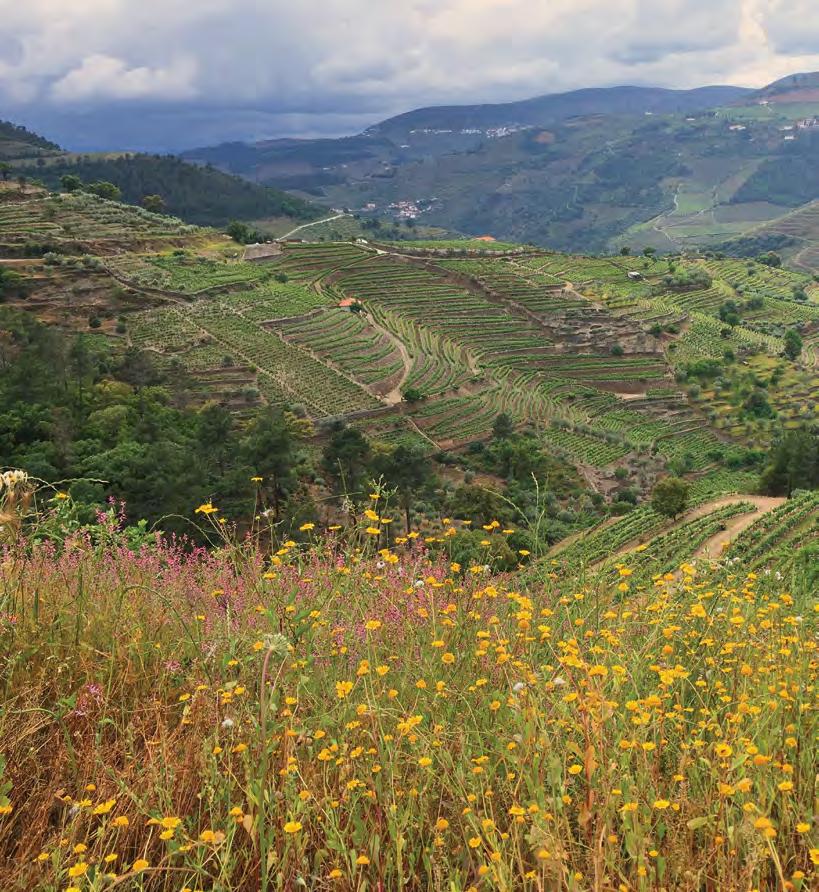

José Gaspar is a winemaker and consultant who has worked in most regions in Portugal. Having spent many years based in the Douro making port, he returned to Lisbon. Many of the wines offered are made from indigenous Portuguese varieties which are not found or planted anywhere else in the world and which make distinctive wines with personality.
“To make a good wine, we must love wine. But experience, know-how, dedication and sensibility also need to be part of the equation.”
– José Gaspar
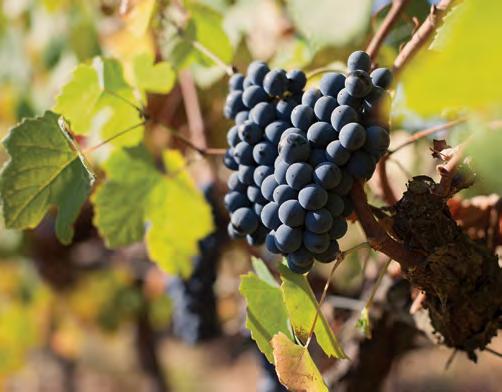
The Dão region is where it all started for winemaker Nuno Cancela de Abreu. His family had been farming land in Dão and making wines there for over 130 years. The region is surrounded by mountains and generally protected from the extreme continental climate as well as the influence of the Ocean. Quinta da Giesta, in Mortágua in the Dão region, is surrounded by 12 hectares of vineyards. This blend of three indigenous varieties is vibrant in colour with aromas of blackberry, raspberries, coffee and herbs. It is light to medium bodied with some firm tannins and a long bitter cherry herbal finish.

Vinho Verde is a light white w ith a bit of spritz. Coming from the northern region of Portugal, it is a blend of three indigenous white varieties –40% Loureiro, 30% Trajadura and 30% Arinto. The 2018 has a lemon sherbet character with a hint of green leaves. It has a marked acidity with a crisp sour lemon finish.

The hot dry summer of 2017 shows through in Dona Carlota with some dried fruits, dates and raisin flavours. It is intense in colour with some red fruit and treacle aromas which lead to a light-bodied wine. It was aged for three months in oak barrels.

Dates, raisins
Slow-grilled rack of lamb with mustard, herbs and apricots
bitter cherries, herbs
Lamb pie with mint
Tejo is one of the oldest wine regions in the country and for the Portuguese conjures up images of vineyards, olive groves, cork forests and Pure Blood Lusitano horses. Encosta do Sobral is located in the far north of the region, close to Tomar. Dark fruit aromas are complemented with those of coffee and milk chocolate. This is a rich supple wine, medium bodied with ripe fruits, spices and tobacco. It is a blend of Aragonez (Tempranillo) and Castelão – a very old red Portuguese variety that is almost exclusively cultivated in the country. It was matured with oak for eight months.
2019-2022, M8 D9
Succulent fruits, tobacco
with tomatoes and braised beef


Of all the indigenous grape varieties in Portugal, Touriga Nacional is the one consistently winning acclaim. Winemaker
Pedro Sereno’s 2015 Touriga Nacional has produced a fragrant, rich and tannic wine. Aromas of coffee and lavender with a slightly savoury edge lead to a palate brimming with dark fruits, fresh blackcurrants and blackberries. The wine has a firm chewiness to it which is perfectly balanced by the dark fruit. It ends with a grippy finish and dark chocolate flavours and will repay some keeping. Matured for twelve months in French oak barrels.
2019-2023, M7 D8 Lavender, coffee 18°C
blackcurrants, blackberries, dark chocolate
Shepherd’s pie
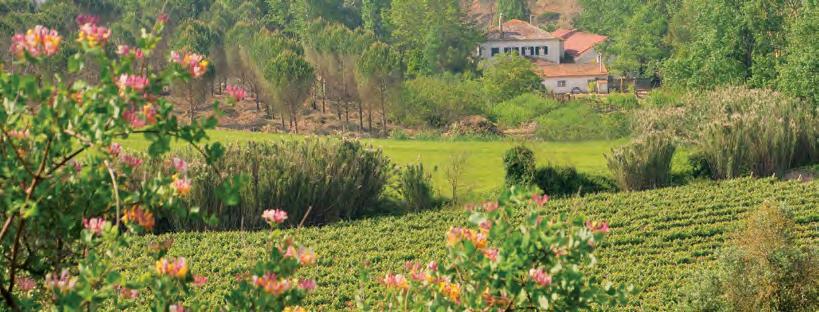
A mixed case with three vintages of encosta do Sobral’s Vale Castelo Reserva. e ach year, the wine is a blend of 40% Touriga nacional, 40% Touriga Franca and 20% Trincadeira. The wine is matured in French oak barrels for approximately twelve months.
Two bottles each 2015, 2016 & 2017

Va L e d o c a S t e L o r e S e r Va , Vinho r e giona L t e jo, 2015
Vinho r e giona L t e jo, 2016
nacional, Touriga Franca, Trincadeira

The 2015 has restrained floral aromas and raspberry jam, dried fruits, figs and a hint of smoke. It is light to medium bodied with a good acidity and flavours of juicy dark fruits, finishing with a long bitter cherry finish. A cool dry spring was followed by a hot summer allowing full maturation of grapes.

Mellow fruit aromas and a weightier palate characterize the 2016 and make it my favourite of the three vintages in the line-up. It is a juicy and succulent wine with good body and a bitter chocolate and cherry finish with some potential for cellaring. A warm summer in 2016 produced a belowaverage crop in terms of quantity.

2017 was a very early vintage due to early budbreak in spring and good conditions throughout the growing season. Deep vibrant plum in colour, the 2017 is muted for the moment with some fruits – red apples and red cherries – preceding a soft supple palate. It is lighter in structure than the 2016 with a fine texture and a long fruity finish.
Tinta Roriz, Touriga Franca, Touriga nacional

Deep purple in colour, Estopa Reserva 2015 has mellow aromas of black cherries with a touch of smoke. It is smooth in texture with juicy fruits and good depth, finishing on bitter chocolate and cherry notes. Grapes were grown on vines planted 15 years ago on steep terraces in the Cima Corgo (Upper Corgo) sub-region of the Douro. Grapes were picked, de-stemmed and crushed. After fermentation at 22 to 23°C, the wine was matured in new French oak barrels for six months.

$ 28.50 $ 171.00 1288
cherries, smoky 18°C
chocolate, black cherry


Touriga nacional, Souzão, Touriga Franca $ 42.33 $ 254.00
A n immensely appealing wine with bags of personality. It is intense in colour with a warming mellow bouquet with dark fruits, a hint of fresh leather and warm puppy. It is soft and smooth, rich and full-bodied. Supple fruit and black cherry flavours are complemented by smoke and soot. It has a fine texture and is delicious to drink now with the potential for some cellaring. The majority of the blend is 80% Touriga Nacional with 19% Souzão and 1% Touriga Franca grown on terraced schist soils in the Douro Superior subregion. Grapes were destemmed, crushed and fermented at 22 to 25°C. The wine was matured in new French oak barrels for twelve months and was bottled in June 2015.
black cherries, smoke
Spicy chickpea and spinach stew
A good ruby port, dense plum in colour with ripe fruits, plums, apples, almonds and herbal aromas. The palate has more focus on fruit with a medium body and a long bitter marzipan finish. Grapes were crushed and fermented for two to three days, and the fermentation was arrested by the addition of wine brandy, producing a port with 19.5% alcohol and over 100 grams of residual sweetness. It was aged in old casks for three years.
Tawny ports generally spend a much longer time aging in oak casks. Their colour becomes paler and more orangey in hue. Soneto Reserva Tawny spent eight years in old casks and has a translucent orange ruby colour. Nutty and apricot aromas are intense with more smoky treacle flavours coming through in the mouth. It is sweet with a good bitter finish and some grip.
This Late Bottled Vintage port has a bouquet w ith black cherries and marzipan with a leafy edge. There are raisins and a hint of earth. On the palate it is full-bodied with good depth. Juicy fruits are offset by a grippy finish. This wine has a more complex and weighty style with lingering bitter cherry flavours.
Marzipan, [08]
blue cheeses: Stilton, Roquefort, Gorgonzola and Fourme d’Ambert


Smoky, treacle, [07]
Chocolate lava cake

Fresh fig and port sorbet Ready to
Juicy fruits, bitter cherries, [08]

Two bottles each Reserva especial, Reserva Tawny, & Late Bottled Vintage 2009

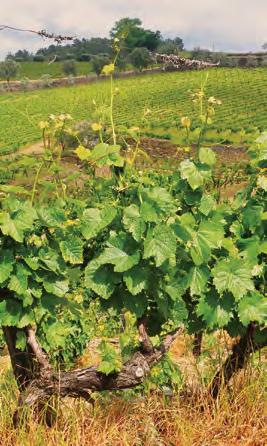

Produced from the highest quality grapes from a single year and only released in the best years, Vintage Port is the pinnacle of quality and 2016 was a great year – rare in that all the top port houses declared a vintage. Dense with a solid purple colour, Soneto 2016 has herbs, mint, black cherries, pipe tobacco and spicy aromas. It is rich and sweet, fullbodied with succulent fruits, chocolate and a fine-grained texture with a powdery finish. It should evolve for decades. A cold, wet spring was followed by a hot dry summer with some rain in September. The result was low yields but of very high-quality grapes.
over the next 2 decades


1292
c œ ur de S Lancier S B L a nc, Vin de f r ance
Colombard
$ 15.75 $ 189.00
White and pink grapefruit aromas give Coeur des Lanciers lots of appeal. It is crisp and tangy on the palate with gooseberry and lemon flavours.
The Mâconnais region is the most Southern part of Burgundy. It starts at Tournus and runs approximately 50 kilometres southwards to the villages of Pouilly, Fuissé and Saint-Vérand just south of Mâcon. As with the rest of Burgundy, limestone soils predominate with layers of marl, silt and gravel. 2018 saw a good crop of grapes for the second year running with no frost or hail. Both 2017 and 2018 vintage wines are showing well.
Paul Sapin wines are known for their value & quality.
1293 c œ ur de S Lancier S r o S é , Vin de f r ance
$ 15.75 $ 189.00

Cœur des Lanciers
Rosé is pale pink in colour with pears, strawberries and cream and sour cherry flavours with a good acidity. Grenache grapes were grown in the Côtes de Gascogne in south-west France.
1294 c œ ur de S Lancier S r o uge, Vin de f r ance
$ 15.75 $ 189.00

Herbal leafy and floral aromas lead to more savoury flavours on the palate. This is a medium to fullbodied wine with firm tannins and a grippy bitter fruit finish.
cherries, strawberries and cream,
Chardonnay
$ 26.67 $ 160.00

A light and refreshing white from the Mâconnais with aromas of hazelnuts and nectarines. It has fresh white fruits and lemony flavours with a crisp acidity and some citrus pith giving length.
2019-2021, M8 D9
nectarine, hazelnuts 6°C
White fruits, lemon, [00]
blanquette de veau (white veal stew)
1296 pa u L Sapin Mâcon, La c o LL ection, ao p, 2018 Gamay
$ 25.17 $ 151.00

This red Mâcon wine was made from Gamay grapes which underwent some carbonic fermentation and was fermented at low temperature then bottled early to maximise its fruity character. It is bright ruby in colour with soft red fruit aromas. A light to medium bodied wine, it is supple with fine tannins and a grippy acidity.
2019-2021, M8 D9
Soft red fruits 14°C
Supple
beef carpaccio with arugula and Parmesan cheese

1297
pa u L Sapin Saint-Véran, La c o LL ection, ao p, 2018
Chardonnay
$ 32.50 $ 195.00

Quite restrained as a young wine, the 2018 has some floral and pear aromas with mineral and wet earth notes. It is crisp with lingering lemon and lime flavours. The appellation takes its name after the village of Saint-Vérand in the far south of the Mâconnais region. Part of the grapes were vinified in barrels, and the balance in tank with some short skin contact.

d o M a
1298
Domaine Mont-Saint-Gilbert is located in the Mâconnais at Davayé and consists of approximately 40 hectares of vineyards located in both the Mâconnais and Beaujolais regions. Sébastien Collonge manages the estate and makes the wines.

d o M a ine Mont Saint-g i LB e rt, a op p o uiLLy-f u i S S é , Vin de Bourgogne 2017

Ripe tropical fruit aromas of ripe nectarines and pineapple are complemented by a malted biscuit character adding complexity. It is smooth on the palate with more flavours of fresh stone fruits emerging and a limey finish. After pressing and clarification of the grape must, it was fermented at low temperature and then aged on lees for six months in tank.

Butterscotch aromas with yogurt and lemon make up a mellow bouquet followed by toffee and banana flavours on the palate. It has more mid palate richness than the Mâcon-Villages with a broader structure and persistent finish. Delicious for drinking now.
$ 47.50 $ 285.00
Ripe fruits, passionfruit and clementine with a bit of aniseed give immediate pleasure. This wine has good weight and mid palate with a firm sour citrus finish and flavours of clementine, orange and orange peel giving bitterness and length. A white wine with more potential for cellaring, it was matured in oak barrels for twelve months.
fruits, lime, [00]
Opimian’s wine programs are designed to help you develop your palate at each stage of your journey. It starts with Discovery; once you’ve cultivated your curiosity and explored the wine world, you can graduate to Select Plus — the “next level” mixed cases, with both ready to drink wines and wines for aging. After you’ve challenged your palate and started your cellar, it’s time to start collecting with Founders’ Choice — premium wines available exclusively through this program. You do not have to worry about deadlines or ordering procedures since Opimian automatically places an order on your behalf with every new Cellar Offering. Your preferred payment will be used, then your wine is shipped and you will receive a Pick Up Notice indicating where to pick it up. Visit opimian.ca for more information.

EAGER TO LEARN your way around the world of wine or simply enjoy a selection of bottles for everyday drinking? The Discovery program has it all. Over the course of the year, members enrolled in this program receive one mixed case of six bottles from a featured supplier per cellar offering. These wines are all for immediate drinking so you can indulge in one or two the moment they get to you. Whether you’re new to Opimian or fancy hopping on an introductory tour of the world of wine, we recommend this route.

DELVE InTO A VERSATILE SELECTIOn of bottles and explore the four corners of the world of wine. This program features both early drinkability and mid-term aging potential bottles so you can enjoy some now and lay the others down. Throughout the year, Select Plus members receive one mixed case of six bottles per Cellar Offering. These wines may all be enjoyed young but will benefit from some maturing time. The ideal program for those who wish to expand their horizons and refine their palate one bottle at a time.

A COLLECTOR’S DREAM Dedicated to the spirit of our Founders, this program features wines that are exclusive to this program and don’t appear on our Cellar Offerings. Made up of six bottles of a premium wine with a dedicated back label and a special message with tasting notes from the producer, each of the cases you will receive represents some of the very best our producers have to offer. These bottles offer long-term aging potential so you might want to free up space in that cellar … or start building one.